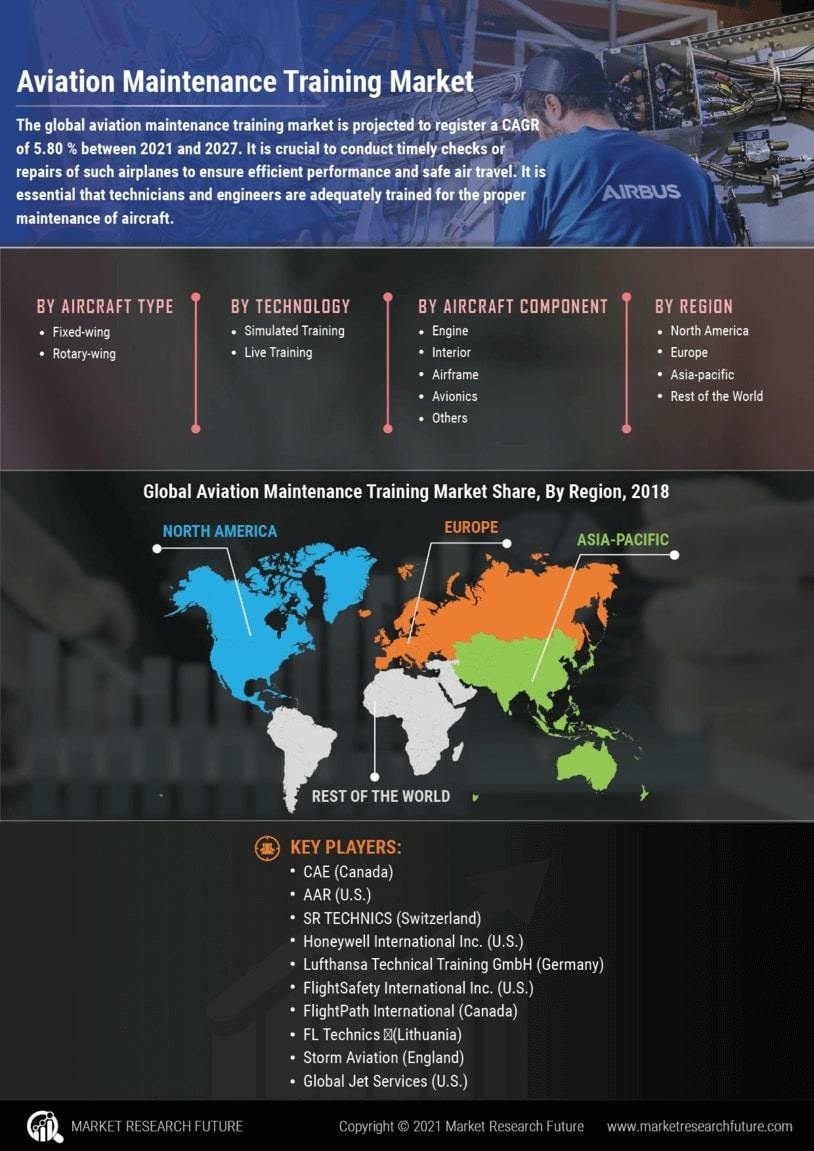Global Expansion of Aviation Markets
The expansion of aviation markets across various regions is a key driver for the Aviation Maintenance Training Market. Emerging economies are witnessing a rapid increase in air travel demand, leading to the establishment of new airlines and the acquisition of additional aircraft. This growth necessitates a corresponding increase in maintenance capabilities, which in turn drives the demand for trained technicians. For instance, regions such as Asia-Pacific and the Middle East are experiencing significant investments in aviation infrastructure, which includes the development of training facilities. As these markets expand, the need for comprehensive training programs becomes evident, creating opportunities for training providers to establish a presence in these burgeoning markets. The Aviation Maintenance Training Market is thus poised to capitalize on this trend, as the demand for skilled maintenance personnel continues to rise.
Increasing Demand for Skilled Technicians
The Aviation Maintenance Training Market is experiencing a notable surge in demand for skilled technicians. As the aviation sector expands, the need for qualified personnel to maintain and repair aircraft becomes paramount. According to recent data, the aviation industry is projected to require approximately 700,000 new maintenance technicians by 2030. This growing demand is driven by the increasing number of aircraft in operation and the complexity of modern aviation technology. Consequently, training programs are evolving to meet these needs, emphasizing hands-on experience and advanced technical skills. The Aviation Maintenance Training Market is thus positioned to benefit from this trend, as educational institutions and training organizations adapt their curricula to produce a workforce capable of addressing the challenges posed by new aircraft technologies.
Regulatory Compliance and Safety Standards
The Aviation Maintenance Training Market is significantly influenced by the stringent regulatory compliance and safety standards imposed by aviation authorities. These regulations mandate that maintenance personnel undergo specific training to ensure they are equipped with the necessary skills and knowledge to perform their duties safely. As regulations evolve, training programs must adapt to incorporate new requirements, thereby driving the demand for updated training solutions. For instance, the Federal Aviation Administration (FAA) and other regulatory bodies continuously revise their guidelines, which necessitates ongoing education for technicians. This dynamic environment creates opportunities for training providers to develop specialized programs that align with regulatory changes, ensuring that the workforce remains compliant and capable of maintaining safety in aviation operations.
Focus on Sustainability in Aviation Training
Sustainability is becoming an increasingly important consideration within the Aviation Maintenance Training Market. As the aviation sector seeks to reduce its environmental impact, training programs are being designed to incorporate sustainable practices. This includes educating technicians on eco-friendly maintenance procedures and the use of sustainable materials in aircraft repair. The emphasis on sustainability not only aligns with global environmental goals but also appeals to a new generation of technicians who prioritize eco-conscious practices. Training institutions are thus integrating sustainability into their curricula, which may enhance their appeal to prospective students. As the industry moves towards greener operations, the Aviation Maintenance Training Market is likely to see a shift in training methodologies that reflect these values.
Technological Advancements in Training Methods
Technological advancements are reshaping the Aviation Maintenance Training Market, introducing innovative training methods that enhance learning outcomes. The integration of virtual reality (VR) and augmented reality (AR) into training programs allows for immersive experiences that simulate real-world scenarios. This approach not only improves retention rates but also provides trainees with the opportunity to practice skills in a safe environment. Furthermore, the use of online training platforms is on the rise, enabling flexible learning options for aspiring technicians. As these technologies continue to evolve, they are likely to play a crucial role in the effectiveness and efficiency of aviation maintenance training, ensuring that the workforce is well-prepared for the demands of the industry.


















Leave a Comment